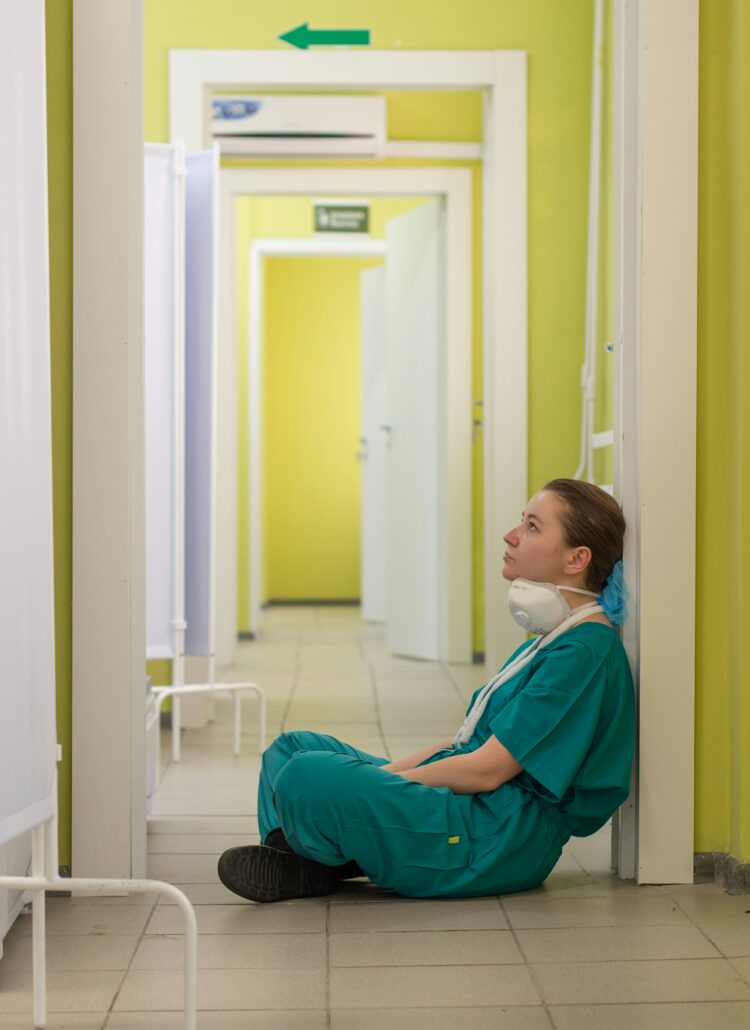For parents, nothing is more terrifying than the thought of their child being sick. But what is even more alarming is when your child ends up in critical condition and needs to be cared for by a team of professionals who specialize in treating children.
That’s where Pediatric Intensive Care Unit (PICUs) come in.
PICUs are particularly important for children who need intensive care that cannot be provided in a regular pediatric unit or by general adult medicine doctors.
This post will tell you about the pediatric intensive care unit, its benefits, drawbacks, and skills you must have to work there as a nurse.
What is a Pediatric Intensive Care Unit (PICU)?
Pediatric Intensive Care Unit (PICU) is an intensive care unit that focuses on the treatment of newborn and pediatric patients.
PICUs are often located in larger hospitals with more patients, but they can also be found in smaller facilities. The management of neonatal and pediatric patients in a separate area such as PICU is necessary because these patients have unique needs, including different types of equipment and highly specialized staff trained to deal with their specific ailments.
A typical PICU may contain several beds, each separated by curtains or other barriers to providing privacy for family members while they stay with their child.
Staff members work in shifts to provide around-the-clock care for infants and children who are often critically ill or injured.
Here are some quick facts:
- The PICU is a high-tech environment that requires highly trained medical professionals to work together as a team.
- The average length of stay in PICU is about ten days, but some patients require longer stays.
- The average age of patients admitted to PICU is about two years old, but some are much younger or older than this average.
When is a Pediatric Intensive Care Unit Needed?
There are some conditions that require admission to the pediatric intensive care unit (PICU). These include:
- Severe respiratory failure from pneumonia or other causes.
- Severe neurological damage from meningitis or encephalitis (swelling of the brain).
- Severe blood loss from trauma or surgery requires life-saving transfusions of blood products such as packed red blood cells (RBCs) and platelets (the clotting cells in our blood).
- Severe bleeding that cannot be stopped by conventional measures such as intravenous fluids, medications, and bandages.
- Severe sepsis (whole-body infection) due to bacteria or viruses that cannot be controlled with antibiotics.
Who Works in a PICU?
A PICU is staffed by a team of healthcare professionals, including:
- Physicians: physicians are the lead medical providers in a PICU. They oversee the patient’s care and provide guidance to other members of the team.
- Nurses: nurses are experts in caring for people who are sick or injured. They provide direct patient care, educate patients and families about their conditions, and help coordinate the needs of patients and their families with other members of the healthcare team.
- RNs (Registered Nurses): RNs are licensed professionals who have earned an associate degree or higher in nursing (ADN or BSN). RNs typically work under the supervision of physicians in hospitals and other health care settings.
- LPNs (Licensed Practical Nurses): They assist RNs with routine nursing tasks and administer medications under physician orders.
- Pharmacists: pharmacists provide expertise on medications used in treatment plans for patients admitted to PICUs. They also help identify potential drug interactions between medicines and monitor for harmful side effects related to medication use.
- The Respiratory Therapist: You can’t have a PICU without respiratory therapists. These are the people who hook up all the breathing tubes, administer medications, and help with ventilator management. They also help with tracheostomy care, suctioning, and more.
What Equipment is used in the PICU?
The following is a list of some of the equipment used in our PICU:
- Invasive blood pressure monitor – This is a cuff that goes around your arm and measures your blood pressure. We use it in case we need to give you IV fluids or medications quickly.
- Intravenous (IV) catheter – This is a small tube inserted into a vein in your arm or hand to give you fluids and medications through an IV line.
- Respirator – This machine helps you breathe if you can’t breathe on your own. It also helps keep airways open when needed because some children have trouble breathing independently due to lung damage from infection.
- Ventilators – Ventilators are used to deliver oxygen and air to patients with respiratory problems, including premature babies and infants with breathing difficulties or chest infections. Ventilators can also be used to deliver medication through a mask, nebulizer, or tracheostomy tube (a tube placed in the windpipe through an incision in the neck).
- Oxygen saturation monitor – This device measures how much oxygen is in a patient’s blood. It’s used to monitor whether a patient is getting enough oxygen during surgery and after cardiac arrest.
Levels of Care for PICU
With the increasing number of children who are being admitted to the Pediatric Intensive Care Unit (PICU), there is a need to classify the severity of illness based on the level of care provided. This classification helps healthcare providers and families understand which interventions or treatments are appropriate for each child.
As per the studies, levels of care for PICU have been classified into three levels:
Level 1: Basic Critical Care
Patients at this level need general critical care, including respiratory support and monitoring for organ failure. Some patients may require more specialized treatments for their illness or injury, such as surgery or intravenous (IV) medications.
Level 2: Intermediate Critical Care
The goal of this level is to support patients who require more complex care than can be provided in level 1. This may include patients with severe cardiopulmonary disease, multi-organ failure, and other conditions that require monitoring and management by specialists in many different disciplines.
Level 3: Advanced Critical Care
This level is for children with severe, life-threatening illnesses or injuries who need advanced monitoring and diagnostics. These patients may need mechanical ventilation or an invasive procedure like surgery or angioplasty to treat their disease process.
ICU Vs. PICU-What is the Difference?
Although the ICU and PICU are both intensive care units, they differ. In general, an ICU is for adult patients who need to be monitored closely due to their being critically ill.
A PICU is for children who need ventilator support and may have other medical problems such as congenital heart disease or neurological disorders.
The main difference between an ICU and a PICU is that in an ICU, the patient’s airway is maintained by breathing devices such as a ventilator or tracheostomy tube instead of mouth-to-mouth resuscitation.
In addition, a child with complex medical problems may be transferred from another hospital to a pediatric intensive care unit (PICU) if they need more specialized care than can be provided on their home floor.
For example, if your child needs surgery or has a chronic medical condition like asthma or diabetes, they will often be transferred to a PICU after surgery or treatment to recover from their illness.
What Does a Pediatric Intensive Care Unit Nurse Do?
The Pediatric Intensive Care Unit (PICU) is one of the most demanding areas of healthcare. A PICU nurse is responsible for the care of children who are critically ill and require life-saving intervention.
The role requires highly specialized knowledge and skills, as well as the ability to manage complex situations in a calm manner.
The duties of PICU nurses include:
- Providing an environment that promotes recovery from illness or injury.
- Assessing a patient’s medical status and needs 24/7.
- Monitoring patient conditions, including vital signs such as heart rate, blood pressure, and oxygen levels, throughout the day and night.
- Administering medications according to physician orders.
Is it Hard to be a PICU Nurse?
It’s a tough job, but someone has to do it.
The Pediatric Intensive Care Unit (PICU) is one of the most challenging places in a hospital. It’s where kids with the most severe health problems come to get treatment. As a PICU nurse, you’ll face difficult daily decisions that could mean life or death for your patients. You’ll also be expected to perform medical procedures that other nurses might not be allowed to do.
Despite the challenges, there are many great things about being a PICU nurse. Here are five reasons why you should consider this career:
1. You’ll save lives every day.
2. You’ll work with a team of talented professionals who share your passion for helping critically ill children.
3. The work is fast-paced, exciting, and never boring.
4. You’ll make a difference in people’s lives every single day
5. You’ll impact public policy change through advocacy efforts.
And That’s A Wrap!
As stated earlier, the pediatric intensive care unit (PICU) is used only when it is necessary. After all, not every child with a high fever or bad cough needs to be placed in the PICU.
But if a child gets sicker and sicker and is at risk of death or another significant negative outcome, they may be admitted to the PICU to receive advanced medical intervention. It’s a place meant to save children’s lives.
FAQs
What is Pediatric Intensive Care Unit Nurse Salary?
According to PayScale, the average salary for a Pediatric Intensive Care Unit Nurse is $75,278 as of August 29, 2022. The salary range typically falls between $70,309 and $79,005.
How Many Types of ICUs Are There?
There are five types of ICU:
1. Pediatric ICU – This is where children who are ill or injured are taken to get treated. The goal is to keep them stable and comfortable while also providing them with the best possible care.
2. General ICU – A general ICU is a place where anyone can be admitted for any reason. This means that you might find people in the ICU who aren’t sick but need to recover from an illness or injury.
3. Coronary Care Unit (CCU) – The goal of a CCU is to stabilize patients who have had a heart attack so they can recover quickly and stay out of the hospital for good!
4. Neonatal Intensive Care Unit (NICU) – The NICU is for babies who were born prematurely or too small to survive on their outside of the womb without help from machines and medications inside the womb for longer than a few weeks after birth.
This includes babies who are born too early at 32 weeks gestation or less than 1 pound 12 ounces in weight at birth (or less than 2 pounds 4 ounces if they’re twins).
What is the PICU Age Range?
The average age range of a PICU patient is between 1 and 17 years.















